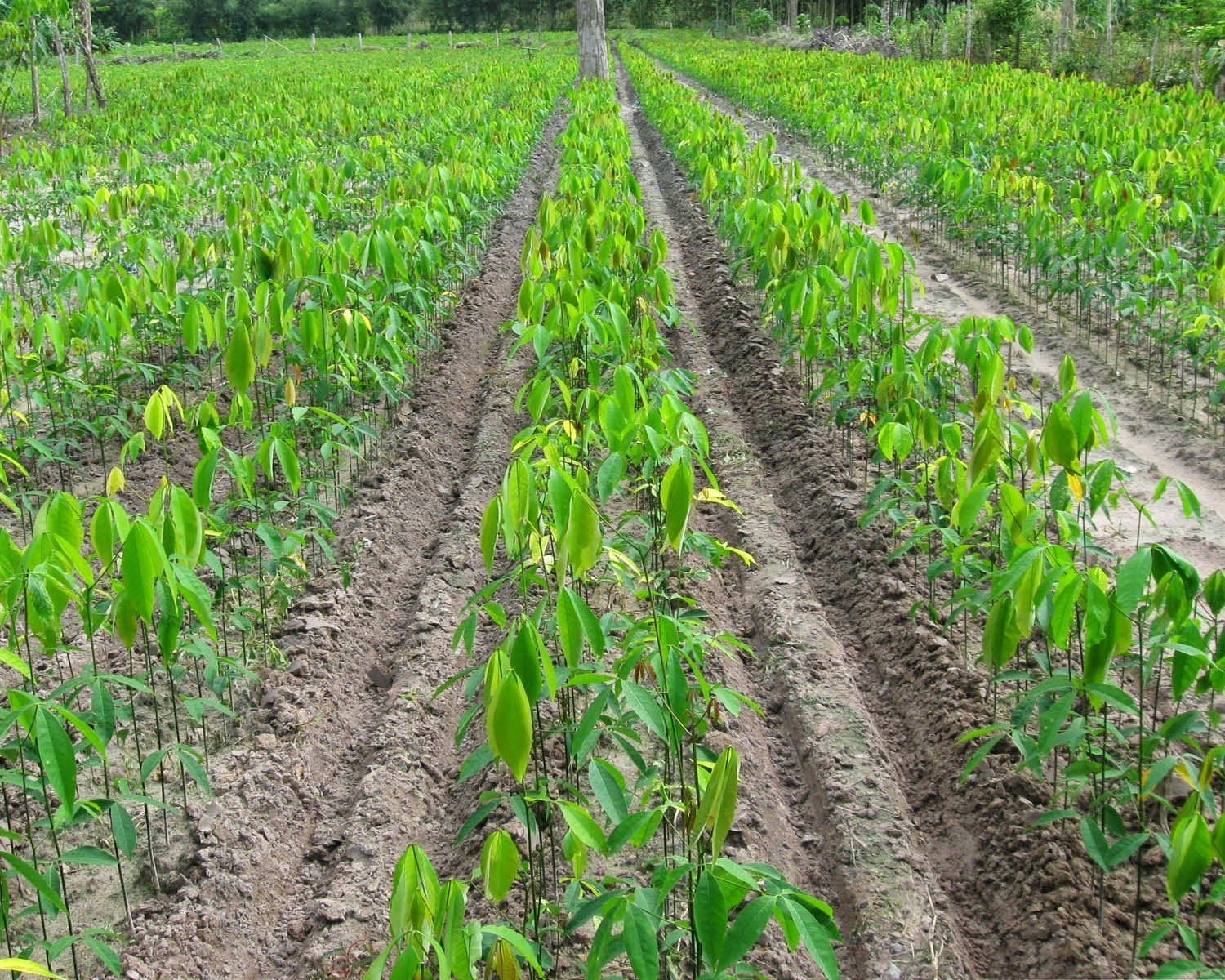
Rubber tree with scientific name is (Hevea brarileneis) belongs to the castor family, native to South America. Rubber trees were first introduced into Vietnam in 1877.
In 1877, rubber trees were first introduced into Vietnam, after more than a century of existence and development, rubber has affirmed its position as a long-term industrial tree of high economic value, with high production and low consumption. The main product is rubber latex, in addition to latex, wood and oil from rubber seeds also bring high value.
By 2003, the rubber area under the Vietnam Rubber Corporation reached 219,600 hectares, of which 173,700 hectares were being exploited. The rubber area is now spread from the Southeast to the Central Highlands and the Central region, the ecological conditions of these regions are very different, the growth and yield of rubber trees also vary depending on environmental conditions.
CURRENT RUBBER VARIETIES
The varieties of rubber trees in Vietnam often grow quickly in the first years, the grafted branches grow fast, have many eyes, and the grafts are easy to live. Growth during shaving is poor.

- Varieties PB 235
Origin: Made in Malaysia, Genealogy PB 5/51 x PB S/78.
Tree form: There are sub-branches that fall off by themselves, creating a tall straight trunk, so there is a large amount of wood. - Varieties PB 255
Origin: Made in Malaysia, Genealogy PB 5/51 x PB 32/36. Mass planting in Southeast rubber companies in recent years.
Plant form: Stems slightly curved when young. Low canopy, wide branching. The grafts have few eyes and the survival rate is low. The primary shell is thick, smooth, slightly hard, and regenerates normally. - Plant variety PB 260
Origin: Made in Malaysia, Genealogy PB 5/51 x PB 49. The variety is widely planted in most rubber growing areas recently.
Tree form: Straight, round trunk, clear elephant legs, well-proportioned canopy, low self-falling branches. The primary shell is medium thick, smooth, easy to scrape, and regenerates well. - Varieties RRIM 600
Origin: Made in Malaysia. Spectrum: Tj 1 x PB 86.
Plant form: Straight trunk, large branches concentrated, wide canopy. Medium thick peel, easy to scrape. Shaved, regenerated shell is prone to protrusion. - Varieties RRIV2 (LH 82/156)
Origin: Vietnam Rubber Research Institute, 1982. Genealogy: RRIC 110 x RRIC 117.
Plant form: Stem straight, round. Medium branching. The branches later fall off on their own. The canopy is low and dense when the tree is still young; canopy high and airy when mature. The shaving shell is medium thick, smooth and easy to shave. - Varieties of RRIV 3 (LH 82/158)
Origin: Vietnam Rubber Research Institute, 1982. Genealogy: RRIC 110 x RRIC 117.
Plant form: Stem straight, round. The branching is concentrated, low, many small branches at the young stage. Lower branches then fall off by themselves. Round, dense canopy. The shaving shell is thick above average, easy to shave. - Varieties of RRIV 4 (LH 82/182)
Origin: Vietnam Rubber Research Institute, 1982. Spectrum: RRIC 110 x PB 235.
Varieties account for a high percentage of the new planting area in the Southeast region.
Tree form: Stem straight, round, bark slightly thin, easy to shave. - Varieties of VM 515
Origin: Made in Malaysia. Spectrum: undetermined.
Plant form: Body slightly twisted, straight, high branched. The primary shell is slightly thick






